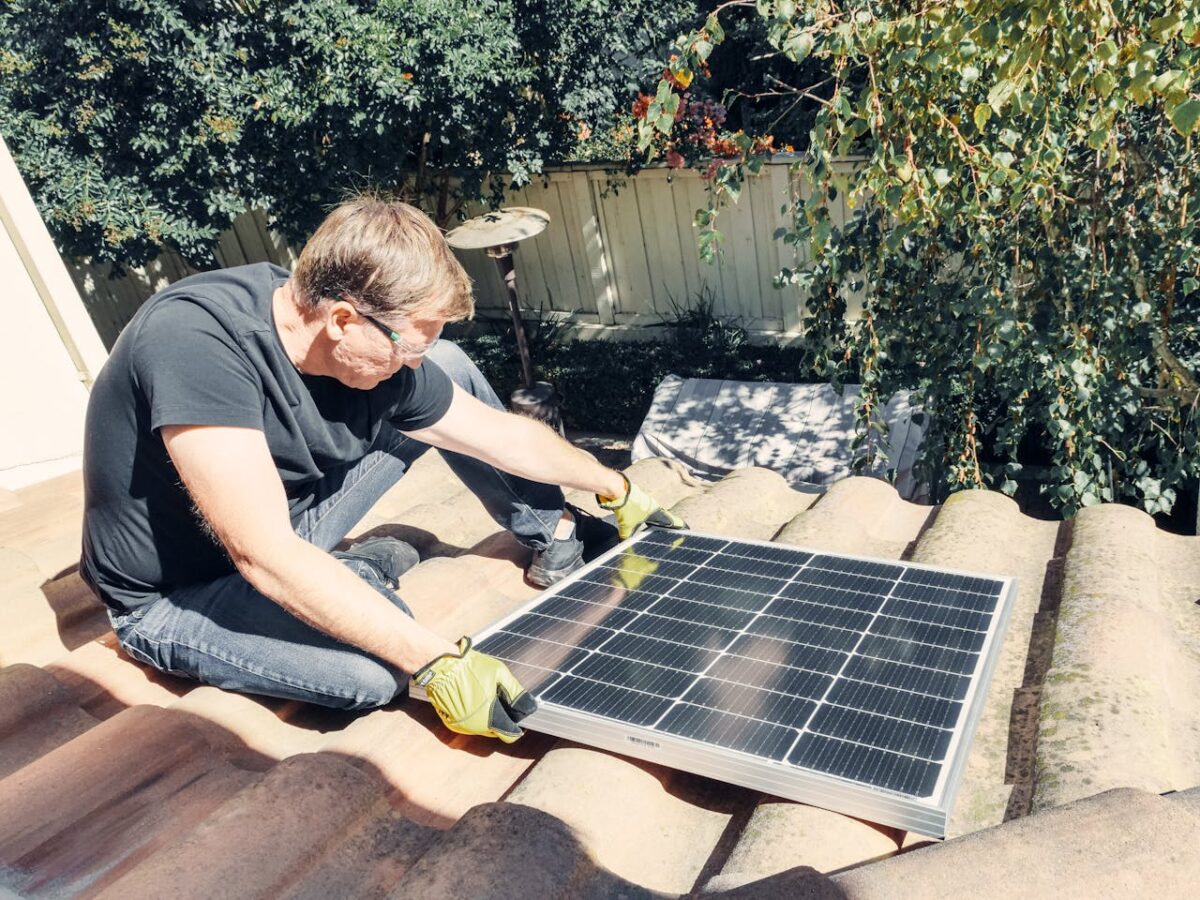Gutter cleaning is an essential home maintenance task that should be done regularly. Keeping up with this chore will prevent clogs and minimize damage to your roof and house.
This task will require climbing a ladder, so it is important to use proper safety precautions. Make sure the ladder is stable and have a spotter on the ground to help you.
1. Gather Debris
Keeping your home’s gutter system clean is one of the most important maintenance projects you can perform as a homeowner. Clogged gutters can cause a host of problems, including water damage to your roof and foundation. Fortunately, cleaning your gutters is easy with the right tools.
The first thing you’ll need is a ladder. If you’re not comfortable scaling a ladder, consider hiring a professional to handle the task. You should also invest in a pair of work gloves, a long-handled scooping tool (like a garden spade), and a garden hose. You’ll also want to gather a sturdy garbage bag or green waste bin to hold all the debris you collect.
If you’re able to climb a ladder safely, start by vacuuming the gutters.. This will quickly remove large clumps of leaves and other debris from the gutters, making it much easier to remove ingrained gunk and sludge. Once you’re finished vacuuming, move the ladder over a few feet and repeat the process until the entire gutter is free of gunk.
You can also use a standard garden hose to wash out the gutters and downspouts. This is a much safer option than climbing on a ladder, but it can be messy and ineffective at dislodging and washing away heavy clogs and debris.
If you use a hose, make sure to direct the nozzle into downspouts as well to clear any blockages. Once you’re finished, be sure to do a final inspection and dispose of any remaining debris on the ground. You should also check that the gutter downspouts are completely clear, directing water away from your house. If they’re not, you may need to install a gutter extension or change the downspout location.
2. Climb the Ladder
Gutters collect rainwater and carry it away from the house through downspouts. Clogged gutters can cause water to back up and seep into the house. Cleaning them is a regular maintenance item that prevents overflow and leaks.
Before you climb the ladder to clean the gutters, make sure it’s secure and stable. It’s best to have another person available to hold the ladder and hand you the tools you need. They can also help you to maintain a good position on the ladder and keep it steady when you move it around the house.
Choose a ladder that is tall enough to reach the gutters. Avoid using a stepladder because they are prone to tipping and can be dangerous. If you are unsure about the height of your gutters, call a professional and have them inspect your roof. They will be able to tell you if your home requires a ladder that’s two or three feet taller than the one you own.
Once you’ve got your ladder, spread a tarp under it to catch the gutter gunk and protect your lawn and landscaping. Also, use a plastic gutter scoop or an old spatula to remove gunk from the rungs of the ladder and off the ground.
If you’re on the top of the ladder, wear protective eyewear to prevent grit and other debris from getting in your eyes. Also, wear rubber-soled shoes to provide the most grip on the rungs and steps of your ladder. You should also consider investing in ladder stabilizers to keep your ladder stable on uneven surfaces. This will save you from having to buy a new ladder and will ensure that your existing ladder is safe for gutter cleaning.

3. Scoop the Debris
While no one jumps for joy when thinking about cleaning gutters, it is an important and necessary home maintenance task that prevents costly roof, wall, foundation, and landscaping damage. Clogged gutters and roof debris can lead to water backup, which in turn causes shingle and fascia damage as well as leaks throughout the house. Regular gutter and roof cleaning will help to keep the property looking great, extend the life of the roofing materials, and prevent moss and algae growth.
While the goal is to clean the gutters, it is best to also clear the roof area as debris washes down into the clean gutter. This will save time and effort in the long run. Use a hard bristled brush or a garden blower with a special attachment to remove loose twigs, leaves, and moss from the roof and the lower gutter areas. Be sure to wear eye protection to protect yourself from flying debris and insects.
Start at one end of the gutter and work your way down, scooping up the gunk as you go. Continue until the gutter is free of twigs, leaves, sludge, and other debris. Once you’re done with one section, move the ladder a few feet over and repeat until the entire gutter is cleaned. Alternatively, you can purchase or rent a wet/dry vacuum that is capable of reaching gutters from the ground.
While you are cleaning your gutters, make sure to look for any signs of rust, holes, or dents. These should be repaired as soon as possible to ensure the longevity of your gutters and roof. It is also important to remember to only work on a roof or high place when the weather is calm and sunny with little wind. Working in bad conditions may cause you to overbalance and fall off the roof or gutters.
4. Rinse the Gutters
Gutter cleaning is an essential chore that must be completed regularly to ensure that your roof and gutter system are functioning correctly. A properly functioning gutter system funnels rainwater away from the home and prevents shingle damage, foundation issues, rot, and basement leaks.
Cleaning the gutters requires you to climb a ladder, so if you’re not comfortable working on ladders or are nervous about heights, it is best to call a professional for this job. If you decide to tackle this job yourself, be sure to work on a clear day when the weather is mild. It’s also a good idea to place the ladder on solid ground and have someone on the ground holding and securing it. Ladders that aren’t stable can lead to falls and injuries. When you’re on the ladder, use a sturdy step ladder and don’t climb above the second-to-last step if possible (an extension ladder is needed for two-story homes).
When you’re done scooping out the gunk, rinse the gutters with a garden hose to remove any remaining dirt, debris, and dust. It’s also a good opportunity to check that the downspout isn’t clogged, which you can do by following the flow of water from the gutter to the downspout outlet.
If you don’t like climbing ladders, another option for keeping your gutters clean is to install gutter guards, which are screens that block leaves and twigs but allow water to pass through. These guards aren’t a perfect solution, however, as they can still get clogged with small stones and other large objects. Be sure to inspect and replace them as needed. Keeping the gutters cleaned and free of debris is an effective way to keep your home safe from clogs, and it also helps you avoid expensive roofing and gutter repairs down the road.
5. Clean the Downspouts
If a gutter is clogged, the resulting back-up of water can damage the roof, fascia and even the foundation. Clogged gutters are often the result of a combination of dead leaves, pine needles, animal nests, dirt, trash and other debris. To help prevent this problem, you need to clean the downspouts regularly. To do this, you will need to climb a ladder again, and you may want to have someone help you by holding the ladder steady. If possible, make the job safer by wearing safety goggles and a long-sleeved work shirt or pants to protect your arms from sharp objects in the gunky muck.
Start by spreading a tarp beneath the area where you will be working to collect all the gunk that falls out of the gutters. This will save you from having to clean up the mess later. You will also need to have a bucket, scoop and other cleaning tools nearby. Make sure the ladder is stable and that you are not leaning on it too much; this can cause it to tip over and possibly hurt you.
Begin by scooping the muck out of the gutters and into your bucket. You can use a gutter scoop or any type of small plastic scoop, as well as a garden spade or old kitchen spatula. The muck will likely contain bits of twigs and other small debris, so be careful not to lose any of these in the process. Next, rinse the downspout to flush it out and remove any remaining debris. If necessary, continue to do this until the downspout is clean. Finally, you can use a flexible rod with a brush on the end, which is often used for cleaning dryer vents, to clear out any remaining clogs in the downspouts.
